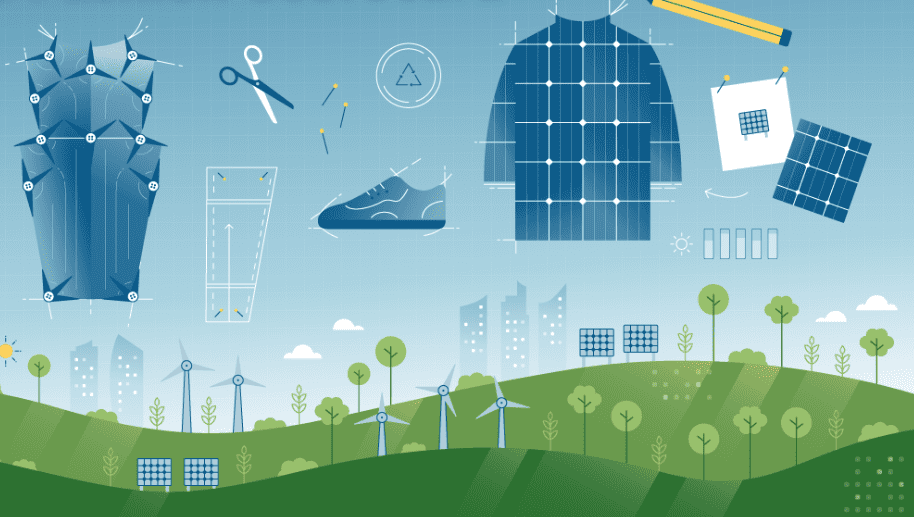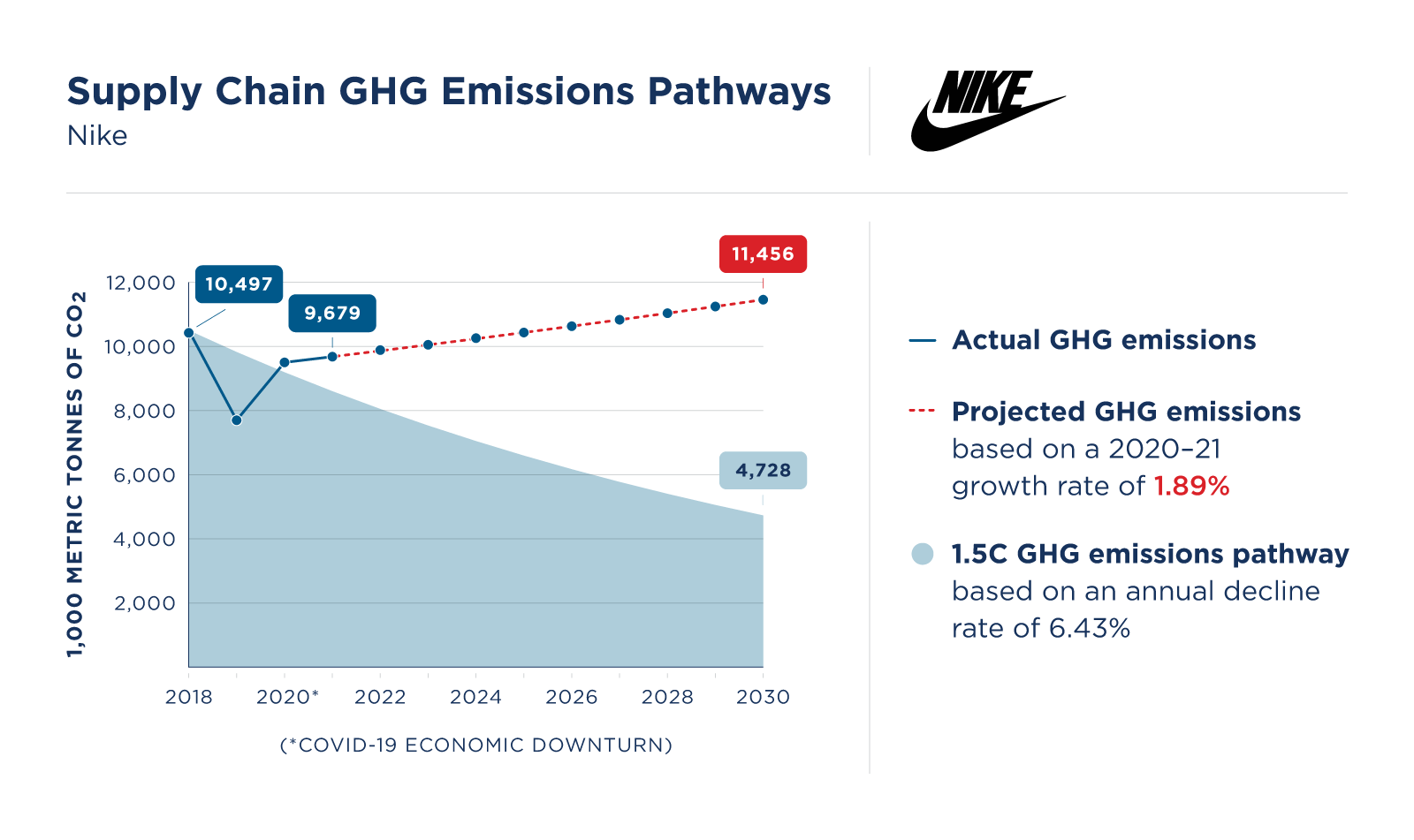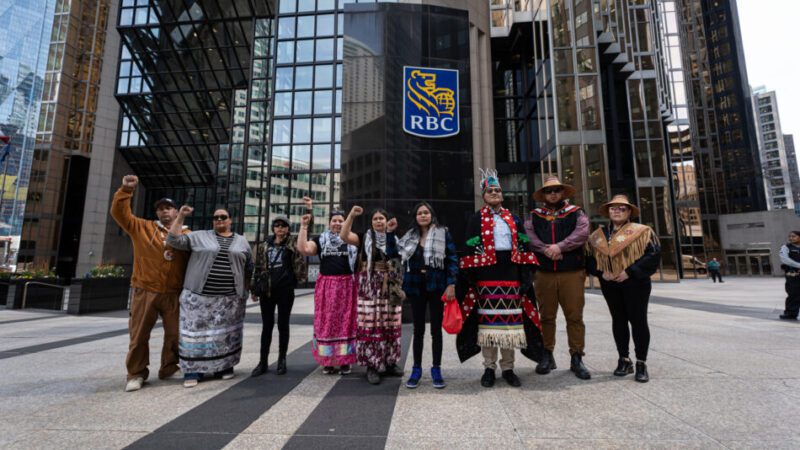Fashion brand emissions are rising. Again.
October 31, 2022

As global leaders gather for COP 27, an updated analysis by Stand.earth of the fashion industry’s emissions shows why its pollution can’t go unchecked.
The fashion industry is a massive global emitter, responsible for 5-8% of annual climate emissions. But despite the growing urgency for dramatic absolute emissions reductions across all industries and geographies, the sector continues to maintain close ties to the fossil fuel industry, through synthetic fibers made from oil and fracked gas, the ongoing practice of burning coal for heat at garment factories, and fashion manufacturers’ continued reliance on fossil fuels for electricity. According to the UNFCCC, “Unless coal is phased out and global greenhouse emissions are halved by 2030, there will be no chance of the world staying below a 1.5 degrees global average temperature rise.”
The UN Fashion Industry Charter for Climate Action now has over 100 signatories, including some of the biggest and most well-known global brands. At COP26 last year the Charter increased its ambition to attempt to bring the sector in line with a pathway to reduce emissions enough to keep climate change below 1.5 degrees C, including increasing signatories’ ambition to reduce absolute emissions across their entire value chain (scopes 1, 2 and 3) by half by 2030, and to phase out thermal coal from their supply chains within the same time frame.
More than 100 companies have committed to significantly cut emissions in the next eight years, but how many of them are on track to do so? Last year, Stand.earth released an analysis of nine of the biggest signatory brands of the UN Fashion Charter, comparing their supply chain emissions trajectory with a 1.5-degree pathway as defined by the UN Environment Programme Emissions Gap Report 2021, and found that unless they make significant changes, all nine will fail to reduce emissions by 55% by 2030.
Now that the world is another year closer to 2030, and has experienced another tragic year of major global climate disasters, it is more important than ever that brands go beyond words and promises and make drastic cuts to their supply chain emissions. In this update, we revisit some of these brands to see what progress has been made in the last year.
Read Key Findings






lululemon has been growing quickly over the last few years, but only began releasing emissions data in 2019. This chart shows a compound growth rate based on the last three years of emissions data focusing on 2019-26, showing how quickly the company’s emissions will grow without urgent action to decarbonize its supply chains. Lululemon has set a relatively weak intensity-based emissions target for its supply chain of a 60% reduction by 2030, but the emissions intensity of its business is also going up. Read more here.


*Update: Fast Retailing shared updated information with Stand.earth about its emissions which shows a moderate decline over the last three years due to working closely with suppliers, reducing coal use, and adopting renewable energy. The decline shows progress but still falls short of the UN emissions gap target of 55% absolute reduction by 2030.
Key Findings
-
Fashion brands are still off track to meet the 1.5 degree emissions pathway, and most are still going in the wrong direction.
Of the 10 companies assessed (American Eagle Outfitters, Fast Retailing, Gap Inc., H&M, Inditex, Kering, Lululemon, Levi Strauss & Co., Nike, VF Corp), only one – Levi – is projected to reduce their supply chain emissions by 55% compared with 2018 levels, in line with keeping warming below 1.5C.
Two of the brands assessed, Nike and Inditex (Zara), reported supplier emissions of close to 10 million tons of CO2e – the equivalent of more than 2 million gas-powered cars on the road per company.
-
While many brands showed a ‘COVID dip’ in emissions in 2020, eight out of ten brands’ supply chain emissions climbed again in 2021.
American Eagle, Gap Inc. (Gap, Old Navy), H&M, Inditex (Zara), Kering (Gucci, Balenciaga), lululemon and Nike all increased their emissions from purchased goods and services in 2021, the year after they increased their ambition to reduce emissions under the UN Fashion Charter. Three of the brands, American Eagle, Kering and lululemon reported increases well into double digits – 14.61%, 13.66% and 62.97% respectively – indicating that they will have to make drastic changes in order to meet their goals.
-
lululemon saw the steepest increase in its supply chain emissions trajectory, at over 60%.
Despite its commitment to reduce scope 3 emissions as part of the UN Fashion Charter, athleisure brand lululemon’s emissions jumped by a shocking 62.97% between 2020 and 2021, a compound growth rate of 37.83% since 2019, a trajectory worryingly out of step with their commitments to reduce emissions. Lululemon also saw its emissions intensity rise consistently in the past two years, showing that not only is the company failing to decouple economic growth from pollution, but its supply chain is also actually becoming more polluting.
-
Signs of progress: Levi Strauss & Co., Fast Retailing (UNIQLO) and VF Corp (Supreme, North Face, Timberland, Vans) are reducing emissions; Kering and H&M target a 100% renewable powered supply chain.
In a sign of progress since 2021, three of the brands (Levi, VF Corp, and Fast Retailing) are showing a consistent downward emissions trajectory, and of these two only Levi is projected to meet the 55% reduction target at its current rate of decline.
While all 10 of the brands assessed have set or met 100% renewable energy goals for their stores and warehouses, so far only Kering and H&M have shown the leadership needed to extend this commitment to their supply chains. Cutting out fossil fuels is essential to decarbonize brands’ supply chains and reduce the biggest source of their emissions – brands must commit to 100% renewable energy in their supply chains as well as their own operations.
Coal burned for thermal energy is another important driver of upstream emissions, and a key part of brands’ commitments under the UN Fashion Charter is to phase them out by 2030. However, so far only American Eagle, Nike and H&M have set their own public commitment or shared a pathway to achieve this goal. In this area, H&M has shown leadership again by bringing that target forward to 2025. It is essential that brands set out a clear timeline to end the use of thermal coal, by committing to end new procurement deals with suppliers that use thermal coal, and support existing suppliers to phase it out.
By signing the UN Fashion Charter, all of the brands assessed here have committed to setting meaningful emissions reduction goals, but only a few are currently heading in the right direction to reduce emissions and decarbonize their supply chains. It is clear that the industry has a long way to go to make its actions align with its words.
Fossil fuels have no place in a rapidly warming world, and certainly no place in our closets. Fashion brands must move to rapidly decarbonize their supply chain by committing to 100% renewable energy for their supply chains, and phasing out fossil fuels as a source of energy, fabric and fuel.
Check out Stand.earth’s 2021 Fossil Free Fashion Scorecard for recommendations on how each brand can become a climate leader and catalyst for a global energy transition toward clean and renewable energy.
Methodology:
- The emissions analysis was limited to companies that:
- signed the United Nations Fashion Industry Charter for Climate Action;
- were included in Stand.earth’s Fossil Free Fashion Scorecard;
- reported annual revenue of $4 billion US or greater in 2019 or 2020; and,
- disclosed supply chain emissions data for at least two years prior to the COVID-19 pandemic or including 2020 emissions if the reported emissions exhibited an increase.
- Actual supply chain emissions used in the analysis were obtained from purchased goods and services data reported by companies in their sustainability or annual reports or in their responses to the CDP (formerly the Carbon Disclosure Project).
- Projected emissions were calculated using the year-to-year percent change in emissions (i.e. growth rate) reported by companies from 2020-2021.
[1] https://unfccc.int/news/un-agencies-support-the-just-energy-transition-i…
[2] UNEP, Emissions Gap Report 2021 Executive summary, pXVI



